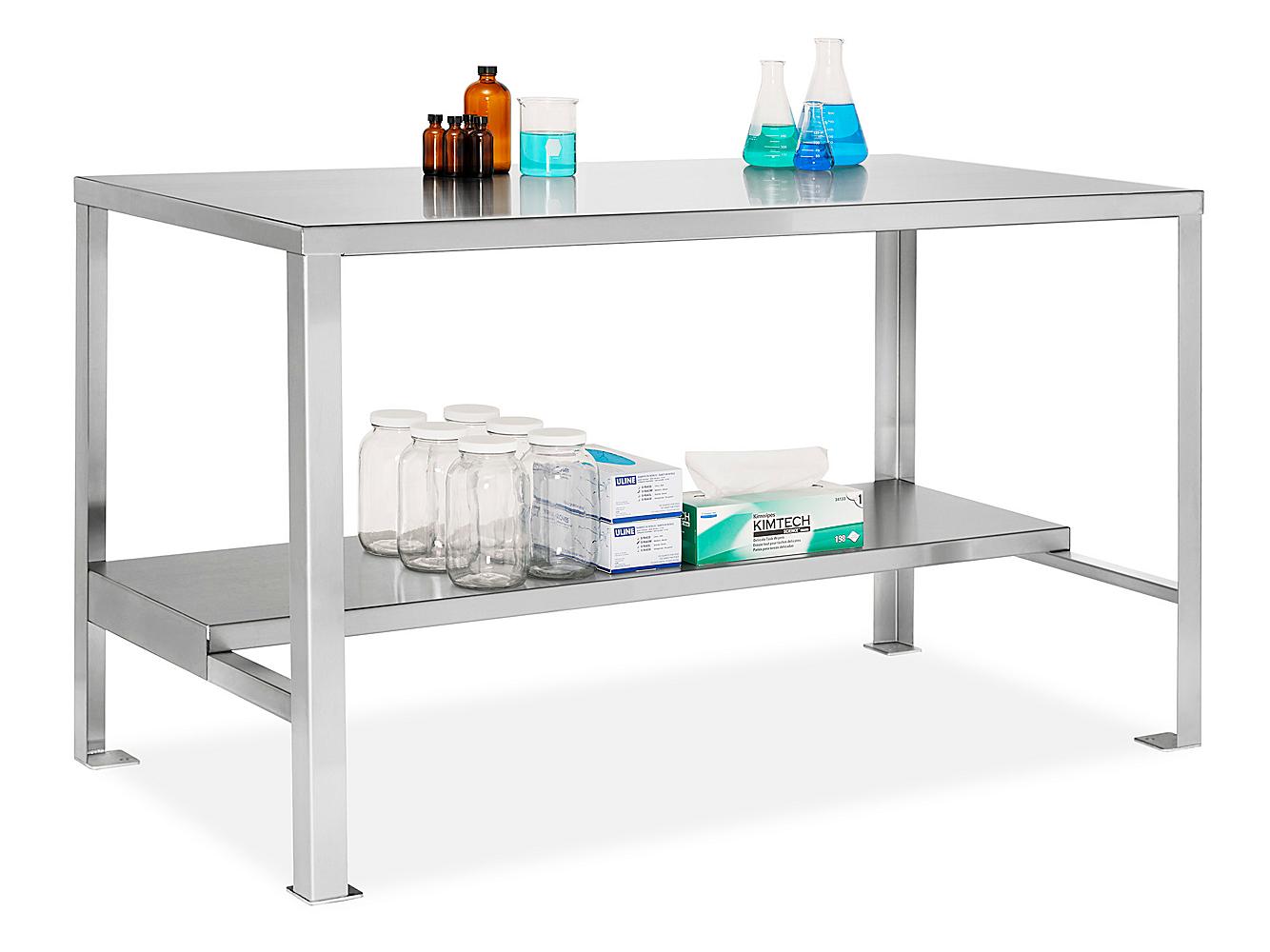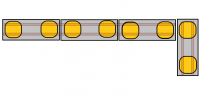T
tuyere
Active Member
Full Member
- Messages
- 391
- Solutions
- 2
- Reaction score
- 0
Howdy all,
The tables we use for our mills aren't up to snuff. They're lightweight stainless steel with poor bracing- these Uline worktables, for the record- https://www.uline.com/BL_803/Stainless-Steel-Worktables - so they wobble slightly if unbraced, and the tabletops are thin enough that they flex under the mills, allowing the machines to wobble when the spindle's movement resonates just right, even if the tables are immobilized.
The correct fix, as I am well aware, is to get beefier machine stands. Proper machine stands, not tables for general use. I have made a case for this several times. For various tedious reasons that fix is not in the cards, so I gotta improve these as much as I can.
So far, my strategy has been to use L-brackets and machine bolts+anchors to tie some of the tables into the concrete block walls, use clamps to tie the freestanding tables to the wall-attached tables, and then placed significantly-beefier welded worktables ( 
 www.uline.com ) as 'bookends' at the end of a row of freestanding tables, doing the same immobilizing work as a wall-tied bench.
www.uline.com ) as 'bookends' at the end of a row of freestanding tables, doing the same immobilizing work as a wall-tied bench.
This has almost eliminated the worst of the whole-table swaying, but it's done little to address the less dramatic swaying you get from the flexing of the tabletop sheet. I can't reinforce the tabletops without an impractical degree of welded reinforcements and gussets, so my thinking is to just throw a thicker, stiffer 'tabletop' down over the existing one, either squares of cold-rolled steel plate, or using several cold-rolled flat bars under each set of mill feet.
Anybody ever attempted anything like this? Any recommendations (aside from "buy better mill stands")? I think 3/16" cold-rolled plate would be sufficient for a full-tabletop Enhancement, but that's not cheap for 5 tabletops and 7 mills. I'm also thinking of 1/4"-thick cold-rolled flat bar, two long bars at least 4" wide and running across multiple tabletops, with every mill's rear and front feet sitting on a given bar. That would be cheaper and would help tie all the tables together and machines together into a single mass that one mill's oscillations won't impact, but it won't distribute the weight as evenly across the tables themselves.
The tables we use for our mills aren't up to snuff. They're lightweight stainless steel with poor bracing- these Uline worktables, for the record- https://www.uline.com/BL_803/Stainless-Steel-Worktables - so they wobble slightly if unbraced, and the tabletops are thin enough that they flex under the mills, allowing the machines to wobble when the spindle's movement resonates just right, even if the tables are immobilized.
The correct fix, as I am well aware, is to get beefier machine stands. Proper machine stands, not tables for general use. I have made a case for this several times. For various tedious reasons that fix is not in the cards, so I gotta improve these as much as I can.
So far, my strategy has been to use L-brackets and machine bolts+anchors to tie some of the tables into the concrete block walls, use clamps to tie the freestanding tables to the wall-attached tables, and then placed significantly-beefier welded worktables (

Welded Stainless Steel Workbench in Stock - ULINE
Uline stocks a wide selection of Welded Stainless Steel Workbenches. Order by 6 p.m. for same day shipping. Huge Catalog! Over 40,000 products in stock. 12 Locations across USA, Canada and Mexico for fast delivery of Welded Stainless Steel Workbenches.
This has almost eliminated the worst of the whole-table swaying, but it's done little to address the less dramatic swaying you get from the flexing of the tabletop sheet. I can't reinforce the tabletops without an impractical degree of welded reinforcements and gussets, so my thinking is to just throw a thicker, stiffer 'tabletop' down over the existing one, either squares of cold-rolled steel plate, or using several cold-rolled flat bars under each set of mill feet.
Anybody ever attempted anything like this? Any recommendations (aside from "buy better mill stands")? I think 3/16" cold-rolled plate would be sufficient for a full-tabletop Enhancement, but that's not cheap for 5 tabletops and 7 mills. I'm also thinking of 1/4"-thick cold-rolled flat bar, two long bars at least 4" wide and running across multiple tabletops, with every mill's rear and front feet sitting on a given bar. That would be cheaper and would help tie all the tables together and machines together into a single mass that one mill's oscillations won't impact, but it won't distribute the weight as evenly across the tables themselves.



